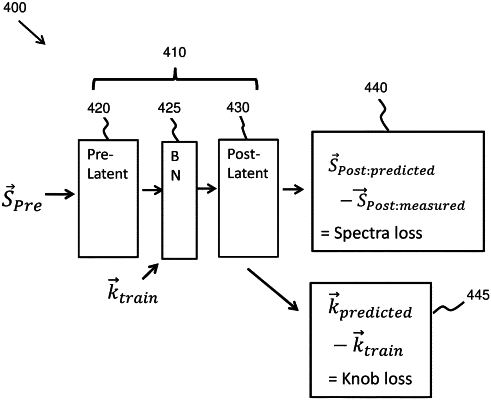| CPC G03F 7/70508 (2013.01) [G03F 7/705 (2013.01); G03F 7/70525 (2013.01); G05B 13/0265 (2013.01); G05B 2219/2602 (2013.01); G05B 2219/45031 (2013.01)] | 17 Claims |

|
1. A system for Advance Process Control (APC) in semiconductor manufacturing comprising one or more processors having one or more associated non-transient memories comprising instructions that when executed by the one or more processors implement steps of:
for each of a plurality of wafer sites, receiving a pre-process set of scatterometric training data, measured before implementation of a processing step, receiving a corresponding post-process set of scatterometric training data measured after implementation of the process step, and receiving a set of process control knob training data indicative of process control knob settings applied during implementation of the process step; and
generating a machine learning model correlating variations in the pre-process sets of scatterometric training data and the corresponding process control knob training data with the corresponding post-process sets of scatterometric training data, to train the machine learning model to recommend changes to process control knob settings to compensate for variations in the pre-process scatterometric data; wherein the generating of the machine learning model comprises training a neural network (NN) including multiple encoder layers leading to a bottleneck latent layer, leading in turn to at least one decoder layer, wherein the pre-process sets of scatterometric training data are applied as model input, wherein the corresponding post-process sets of scatterometric training data are applied as model output, wherein the multiple process control knob training data are applied as auxiliary inputs that intersect the NN at any one of the multiple encoder layers, and wherein the multiple process control knob training data are applied as auxiliary outputs linked to any one of the at least one decoder layer.
|